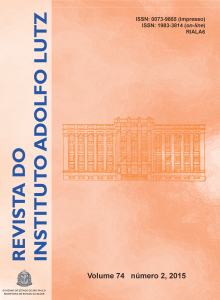Abstract
This study aimed at assessing the sensory acceptability of chicken pate made with different concentrations of sodium chloride (NaCl), potassium chloride (KCl) and monosodium glutamate (MG), and the physical-chemical features of the product were evaluated. In the Step 1, five pate formulations with addition of NaCl and KCl (0 to 1 %) were assessed. The Step 2 analyzed these same formulations but containing MG (0.2 %). In Step 1, no significant difference was found for the attributes appearance, aroma, texture and color. As for taste, overall acceptance and purchase intent characteristics, the sample containing KCl (1 %) received lower scores than that KCl-free formulation. In Step 2, the formulated products showed an increase in the acceptability after adding MG. It was feasible to reduce 75 % of sodium in the chicken pates (NaCl - 0.25 % and KCl - 0.75 %), and to get a sample with the sensory acceptance similar to the standard product, and being achievable to add KCl, specially in conjunction with MG.
References
1. Fiorini SL. Dossiê: Fibras alimentares. Revista-Fi Food Ingredients Brasil. nº 3, 2008. [acesso 2014 Jun 11]. Disponível em: [http://www.revista-fi.com/materias/63.pdf ].
2. Guárdia MD, Guerrero L, Gelabert J, Gou P, Arnau J. Consumer attitude towards sodium reduction in meat products and acceptability of fermented sausages with reduced sodium content. Meat Sci.2006;73(3):484-90. [DOI: 10.1016/j.meatsci.2006.01.009].
3. World Health Organization – WHO. Diet, nutrition and the prevention of chronic diseases. Report of a Joint WHO/FAO Expert Consultation. Geneva: World Health Organization; 2003. (Technical report series n. 916) [acesso 2014 Ago 21]. Disponível em: [http://whqlibdoc.who.int/trs/WHO_TRS_916.pdf ].
4. Nascimento DR, Campagnol BCP, Monteiro SE, Pollonio RAM. Substituição de cloreto de sódio por cloreto de potássio: influência sobre as características físico-químicas e sensoriais de salsichas. Alim Nutr. 2007;18(3):297-302.
5. Gonçalves JR, Silveira ETF, Yamada EA. Considerações sobre a utilização da pré-mistura no processamento de embutidos cárneos emulsionados. Colet Inst Tecnol Aliment. 1995;25(3):1-7.
6. Brasil. Ministério da Agricultura. Instrução normativa nº 21 de 31 de julho de 2000. Aprova os Regulamentos Técnicos de Identidade e Qualidade de Patê, de Bacon ou Barriga Defumada e de Lombo Suíno. Diário Oficial [da] República Federativa do Brasil. Brasília, DF, 03 ago. 2000. Seção 1, página12.
7. Murphy SC, Gilroy D, Kerry JF, Buckley DJ, Kerry JP. Evaluation of surimi, fat and water content in a low/no added pork sausage formulation using response surface methodology. Meat Sci.2004;66(3):689-701. [DOI: 10.1016/j.meatsci.2003.07.001].
8. Nascimento R, Campagnol PCB, Monteiro ES, Pollonio MAR. Substituição de cloreto de sódio por cloreto de potássio: Influência sobre as características físico-químicas e sensoriais de salsichas. Alim Nutr. 2007;18(3):297-302.
9. Lawrence G, Salles C, Septier C, Busch J, Thomas-Danguin T. Odour-taste interactions: a way to enhance saltiness in low-salt content solutions. Food Qual Prefer.2009;20(3):241-8. [DOI: 10.1016/j.foodqual.2008.10.004].
10. Wu W, Zhang Y, Long M, Tang J, Yu X, Wang J, et al. Proteolysis and sensory properties of dry-cured bacon as affected by the partial substitution of sodium chloride with potassium chloride. Meat Sci. 2014;96(3):1325-31. [DOI: 10.1016/j.meatsci.2013.10.037].
11. Aliño M, Grau R, Toldrá F, Blesa E, Pagán MJ, Barat JM. Influence of sodium replacement on physicochemical properties of dry-cured loin. Meat Sci.2009; 83(3):423-30. [DOI: 10.1016/j.meatsci.2009.06.022].
12. Askar SK, El-Samahy SK, Tawfik M. The effect of substituting KCl and K-lactate for sodium chloride. Fleischwirtschaft.1994;73(3):289-92.
13. Collins JE. Reducing salt (sodium) levels in process meat poultry and fish products. In: Pearson AM, Dutson TR. (Ed.) Advances in meat research: production and processing of healthy meat, poultry and fish products. London: Blackie Academic & Professional; 1997.
14. Dutcosky SD. Análise Sensorial de Alimentos. 3ª ed. Curitiba: Champagnat; 2011.
15. Official Methods of Analysis of AOAC International – AOAC. 18th Edition. 4 rev. Gaithersburg, MD: AOAC; 2011.
16. Bligh EG, Dyer WJ. A rapid method of total lipid extraction and purification. Can J Biochem Physiol.1959;37(8):911-7. [DOI: 10.1139/o59-099].
17. Merrill AL, Watt BK. Energy value of foods: basis and derivation. Department of Agriculture Handbook nº 74. Washington, DC, USA: Agricultural Research Service; 1973.
18. Dietary Reference Intakes (DRI). Dietary Reference Intakes for energy, carbohydrate, fiber, fat, fatty acids, cholesterol, protein and amino acids. Washington, DC: The National Academies Press; 2005.
19. Barbosa RG. Fabricação de salame tipo hamburguês com substituição parcial de sódio [dissertação de mestrado]. Santa Maria (RS): Universidade Federal de Santa Maria; 2009.
20. Paulsen TM, Nys A, Kvarberg R, Hersleth M. Effect of NaCl substitution on the sensory properties of sausages: temporal aspects. Meat Sci.2014;98(1):164-70. [DOI: 10.1016/j.meatsci.2014.05.020].
21. Liem DG, Miremadi F, Keast RSJ. Reducing sodium in foods: the effect on flavor. Nutrients.2011;3(6):694-711. [DOI: 10.3390/nu3060694].
22. Carvalho PRRM, Bolognesi VJ, Barreira SMW, Garcia CER. Características e segurança do glutamato monossódico como aditivo alimentar: artigo de revisão. Vis Acad.2011;12(1):53-64. [DOI: 10.5380/acd.v12i1.22025].
23. McGough MM, Sato T, Rankin SA, Sindelar JJ. Reducing sodium levels in frankfurters using a natural flavor enhancer. Meat Sci.2012;91(2):185-94. [DOI: 10.1016/j.meatsci.2012.01.018].
24. Sociedade Brasileira de Cardiologia – Departamento de Hipertensão Arterial. Consensos e Diretrizes. 2011. [acesso 2014 Jul 02]. Disponível em: [http://departamentos.cardiol.br/dha/consenso3/tratamento.asp].
25. Santos BA, Campagnol PCB, Morgano MA, Pollonio MAR. Monosodium glutamate, disodium inosinate, disodium guanylate, lysine and taurine improve the sensory quality of fermented cooked sausages with 50 % and 75 % replacement of NaCl with KCl. Meat Sci.2013;96(1):1-22. [DOI: 10.1016/j.meatsci.2013.08.024].
26. Bellisle F. Glutamate and the UMAMI taste: sensory, metabolic, nutritional and behavioural considerations. A review of the literature published in the last 10 years. Neuroscind Biobehav Rev.1999;23(3):423-38.
27. Pinheiro MD, Porto ARK, Menezes SEM. A química dos alimentos: carboidratos, lipídios, proteínas e minerais. Maceió: EDUFAL; 2005.

This work is licensed under a Creative Commons Attribution 4.0 International License.
Copyright (c) 2016 Instituto Adolfo Lutz Journal
